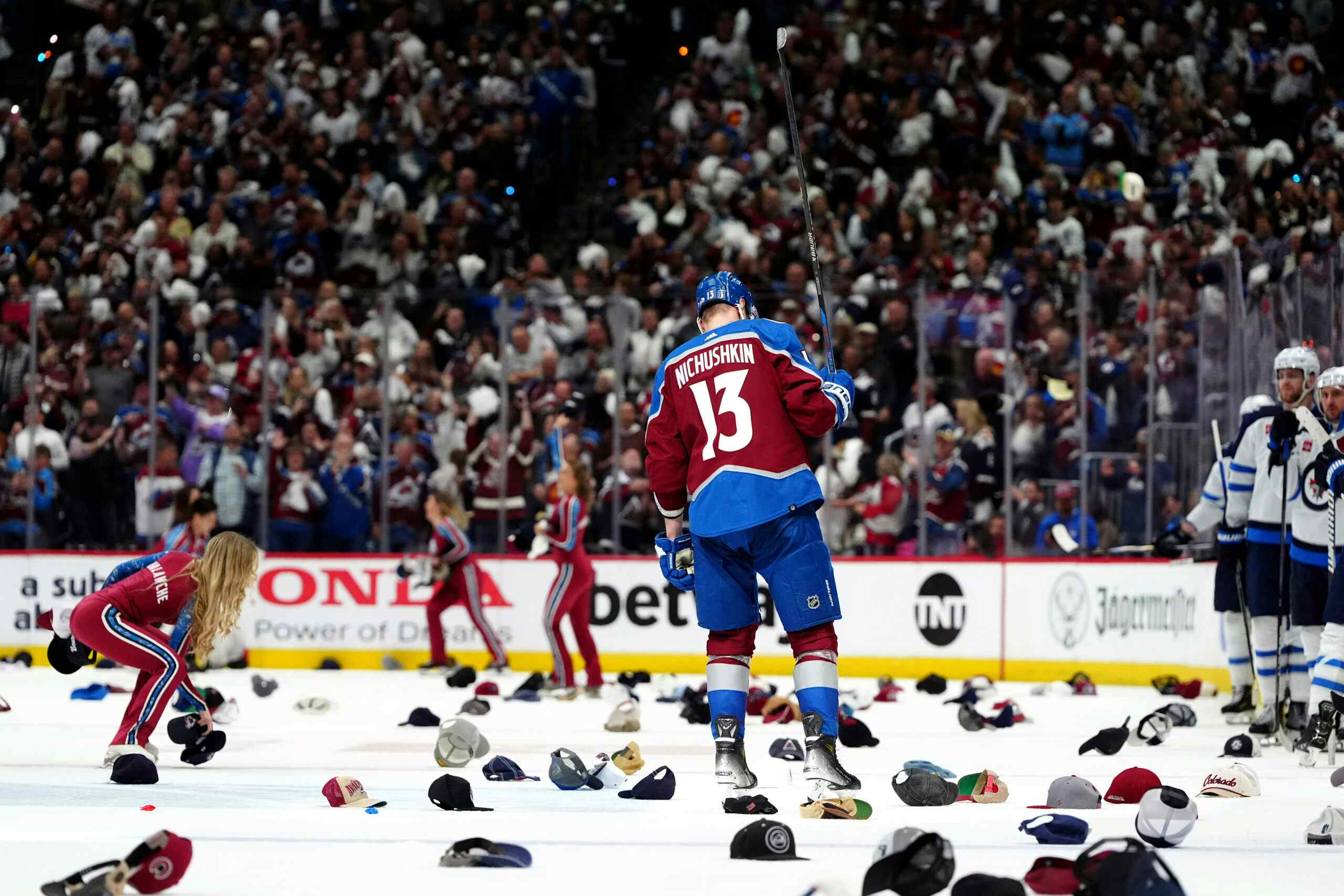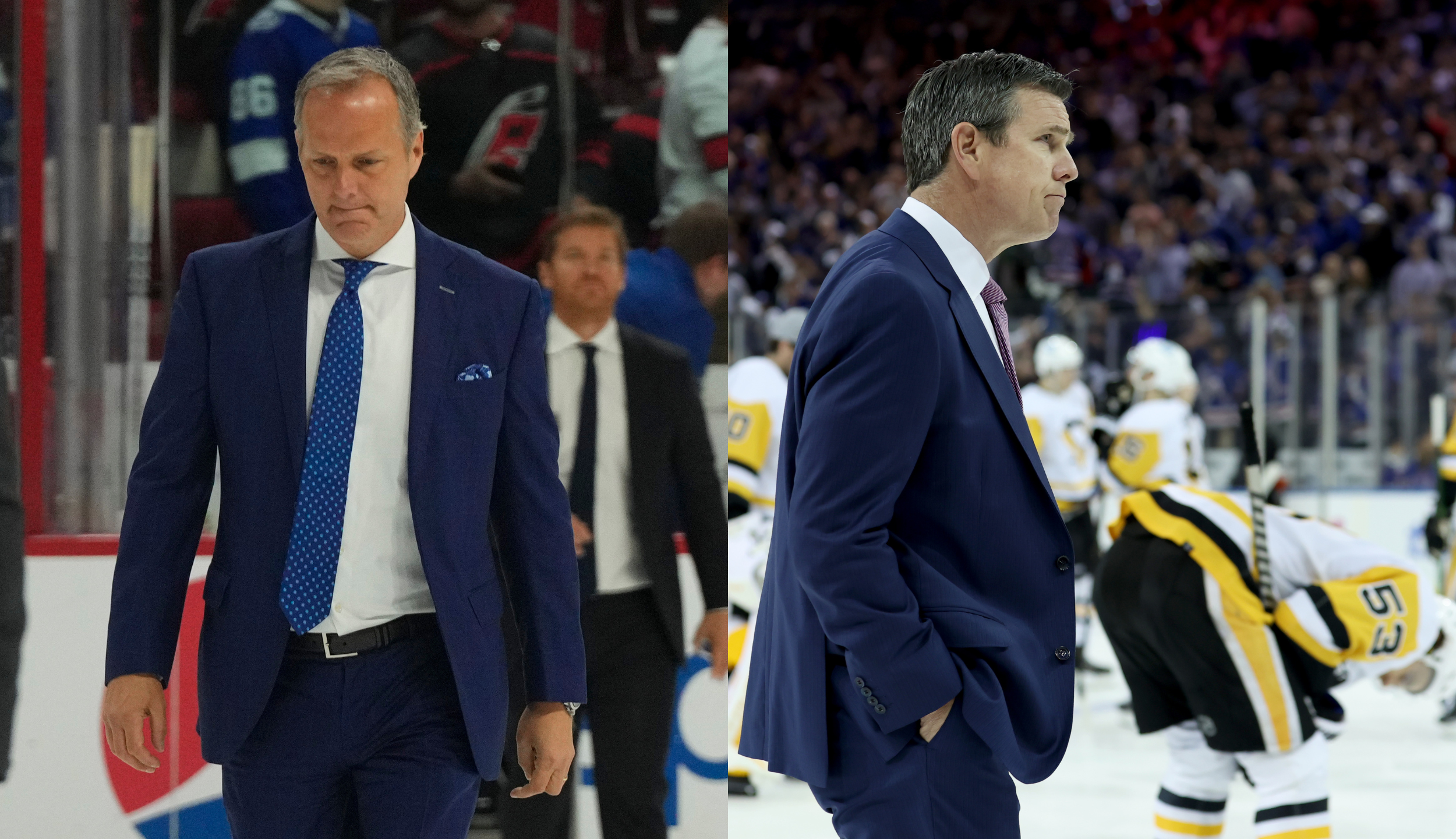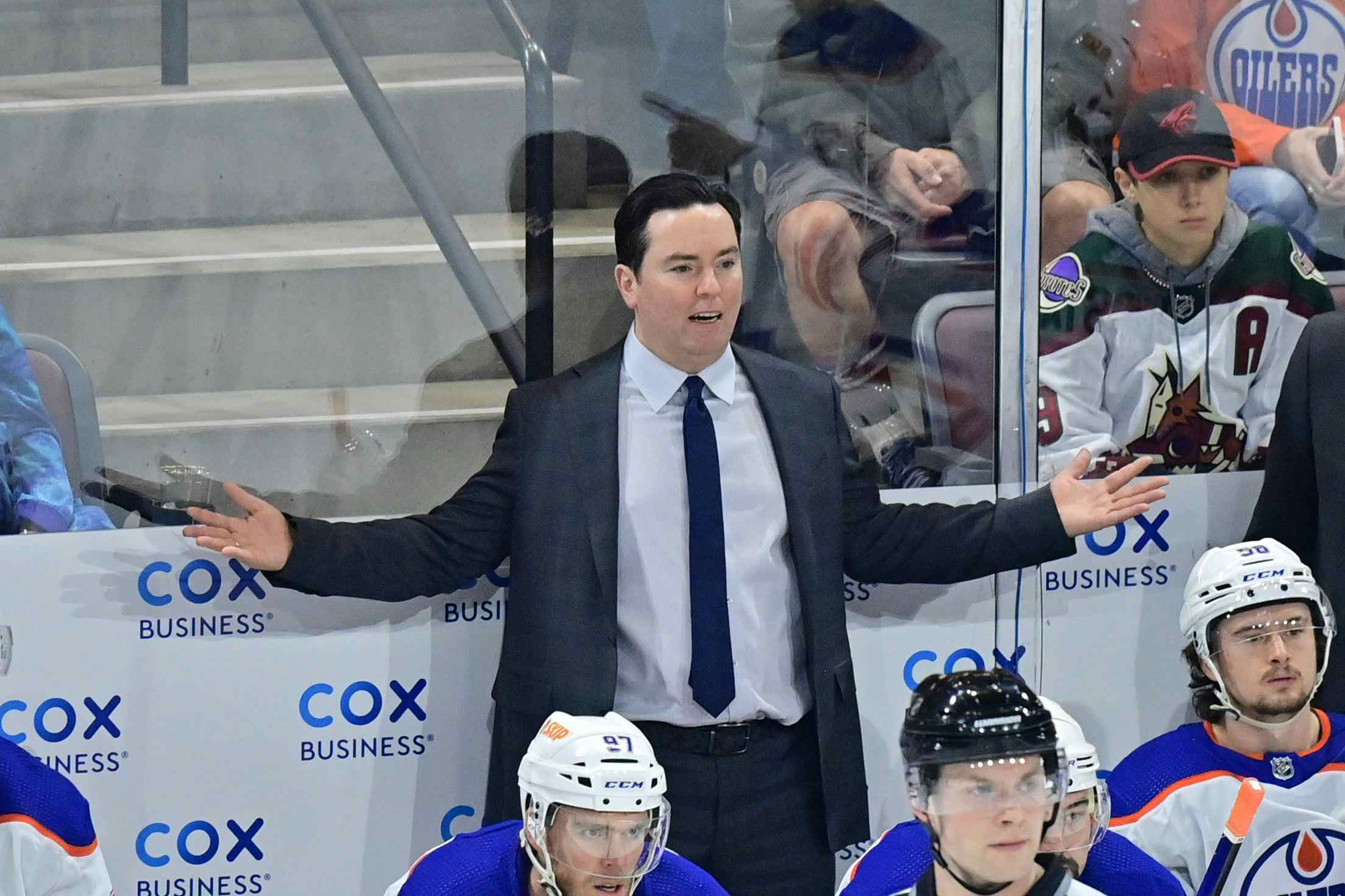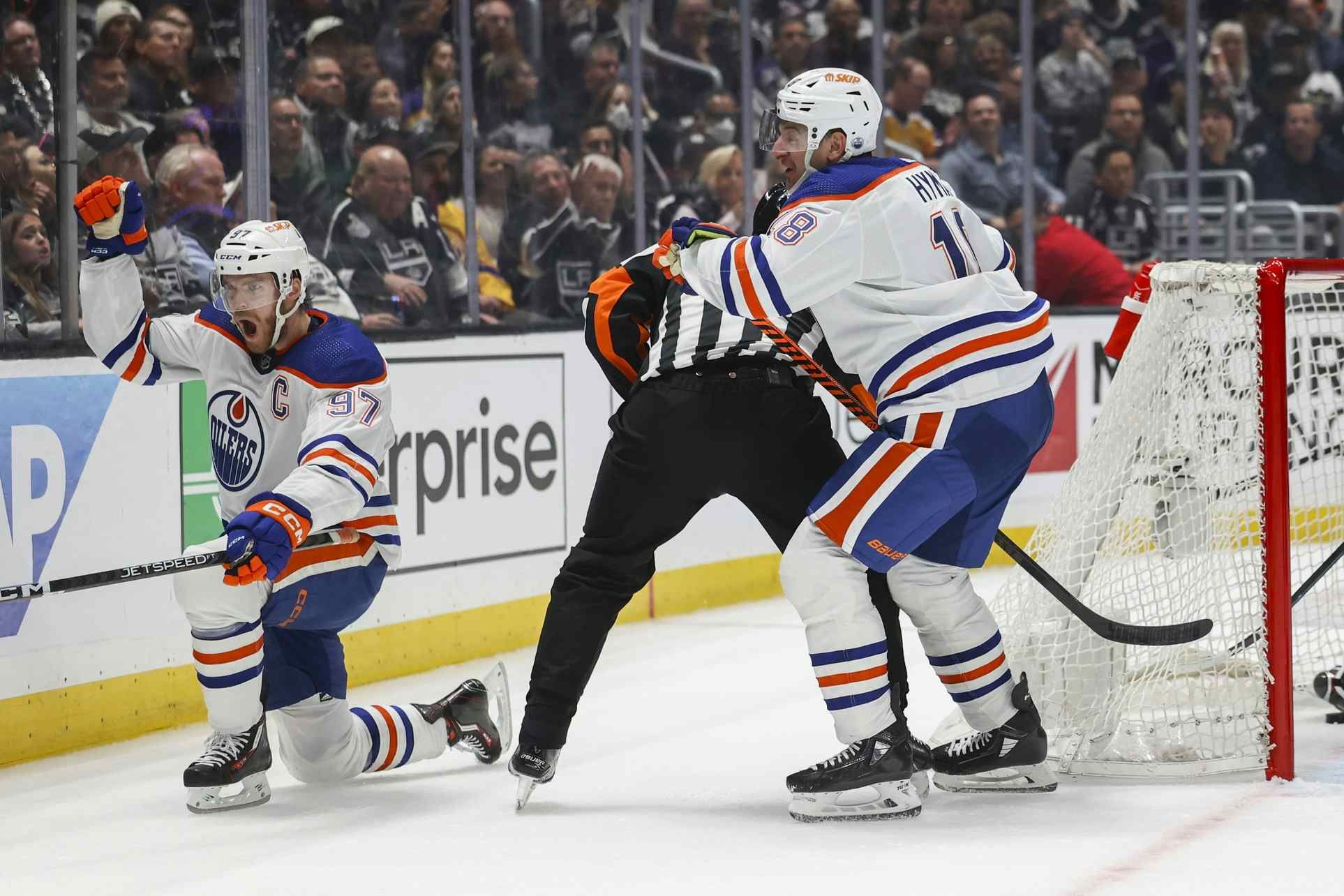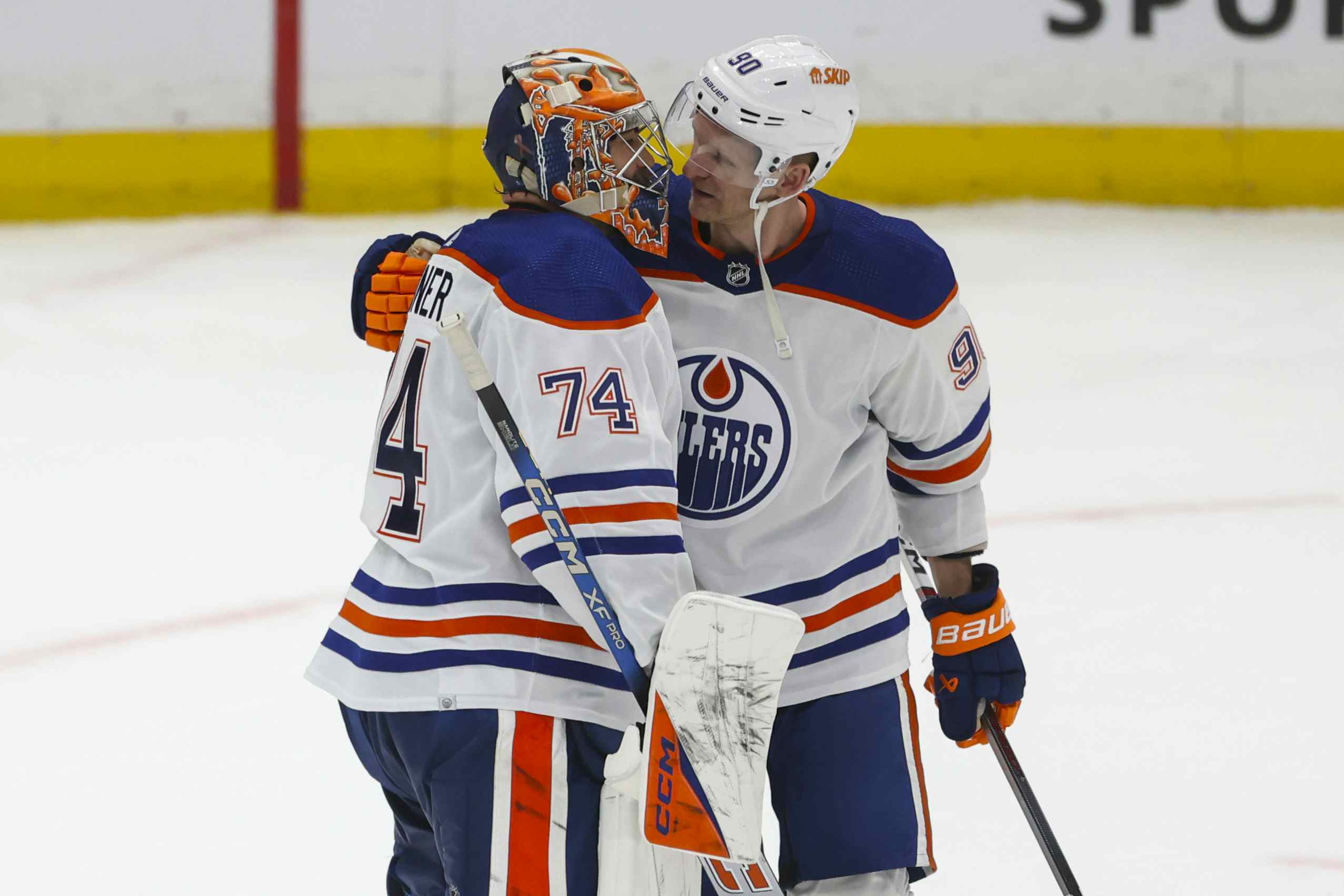HISTORY OF TRADING #1 OVERALL PICKS
By Jason Gregor
10 years ago
I still believe that sometime in the future, not right away, but within two years, the Oilers should deal one of their four young offensive stars. Many don’t like the idea, which I understand, but I was perplexed why some felt that suggesting the Oilers will deal one of them meant I felt the players weren’t any good.
That isn’t the case. The reason I would trade one of them, likely Nail Yakupov, is because he is damn good, and if the deal were done properly the Oilers would be able to fill a few other key holes on the team.
Again, I’m not suggesting it will happen right away, but if it does, I believe it would be the right move. Let me explain.
The Oilers currently have too many similar forwards. Young, skilled, not overly aggressive and none who are defensively sound, at least not yet. I’m certain that Ryan Nugent-Hopkins will become an excellent two-way player, and likely so too with Jordan Eberle. I doubt Taylor Hall or Nail Yakupov will ever be in the running for the Selke trophy, but that isn’t a bad thing.
The league has many great players who will never be Selke candidates. Patrick Kane is never going to be one, and that is why he and Jonathan Toews complement one another so well. Kane is the cold-blooded sniper, while Toews is an offensive threat with a great defensive conscience.
I’m sure Hall and Nugent-Hopkins could fill those roles nicely as they mature.
Great teams have skill guys who can beat you in different ways. Chicago’s top-four forwards are a mixture of pure offensive skill, Kane, solid two-way players in Toews and Patrick Sharp, while Hossa has elite skill, and he’s a heavy forward. Hossa is extremely hard to knock off the puck, and he’s one of the best skaters in the game.
The Bruins top-six is a combination of skill, size, nastiness and a solid two-way game. They don’t have any elite scorers. Last year Brad Marchand led them in goals, 18, and points, 36. When they won the Cup in 2011, Milan Lucic and David Krejci tied for the team lead with 62 points. But they had incredible balance in their top-six and down the lineup.
Krejci and Patrice Bergeron are solid two-way players. Lucic and Marchand can score, hit and fight. Tyler Seguin had 67 points his 2nd season, while Nathan Horton had skill and size. They dealt Seguin, but added Loui Eriksson and Jarome Iginla.
The Detroit Red Wings went to back-to-back Stanley Cup finals with two great offensive players in Pavel Datsyuk and Henrik Zetterberg. They were surrounded by solid complementary players in Johan Franzen, Tomas Holmstrom, Jiri Hudler, Dan Cleary or Mikael Samuelsson. Again, we saw a combination of great skill and two-way play, size, grit and experience.
All of those teams were built a bit differently, but the one thing they shared in common was their top-two lines had players who contained different size and skill sets; they all weren’t pure offensive stars.
The other main ingredient those teams possessed was they had an elite defenceman; Zdeno Chara, Nick Lidstrom and Duncan Keith. On top of finding more balance amongst their top-six the Oilers need to find a true top-pairing D-man.
That is the main reason why I would consider moving one of the skilled wingers. I believe they are attractive enough to garner a solid return.
MOVING # OVERALL PICKS

Teams have traded first overall picks before. I’m sure the St. Louis Blues wish they would have drafted Jordan Staal or Jonathan Toews instead of Erik Johnson first overall in 2006, but they didn’t.
They did, however, make a very good trade when they dealt him, Jay McClement and a first round pick (11th overall, Duncan Siemens) to Colorado for Kevin Shattenkirk, Chris Stewart and conditional 2nd round pick (Ty Rattie).
I think it is safe to say the Blues clearly won that trade. One of the main reasons they were able to deal Johnson was because they drafted Alex Pietrangelo in 2008. They had a legit #1 D-man, and while they knew Johnson wasn’t going to be a #1 D-man, Colorado clearly felt they could mold him into one.
That is the advantage of dealing a #1 overall pick. He has value. Most opposing teams consider him as a first overall selection.
The only other #1 pick to be traded in the salary cap era was Joe Thornton.
Thornton was dealt to San Jose at the quarter point of his 8th season in Boston. Mike O’Connell was the GM at the time and made a horrible trade. He didn’t allow teams to get into a bidding war for the 26-year-old Thornton. Instead he moved him to the San Jose Sharks for Brad Stuart, Marco Sturm and Wayne Primeau.
It was a brutal deal for the Bruins. Thornton went on to win the Hart Trophy that year, while O’Connell was fired later that season on March 25th, 2006. I’m sure Oilers fans remember that 16 days before being fired O’Connell sent the 8th overall pick from Thornton’s 1997 draft class, Sergei Samsonov, to Edmonton for Marty Reasoner, Yan Stastny and a 2nd round pick. O’Connell wasn’t around that summer when the Bruins took Lucic 50th overall.
The Bruins were a team in transition when they dealt Thornton. They had finished 2nd in the east in 2004, but they lost in seven games in the first round. Thornton didn’t have one point in seven games.
Then the lockout came, and when the NHL returned the Bruins lost Michael Nylander, Brian Rolston, Mike Knuble, Sean O’Donnell and Sergei Gonchar to free agency. The Bruins were ten points out of the playoffs on November 30th, 2005 so O’Connell decided to move Thornton. I have no idea why he accepted such a minimal return, but it cost him his job, but then Peter Chiarelli was hired and the Bruins built their team around free agent defenceman Zdeno Chara.
MacTavish must ensure that if he contemplates moving Yakupov, me has to contact every other GM in the league, something O’Connell failed to do.
COMPARISONS
The other only team in NHL history who had three consecutive first overall selections was the Quebec Nordiques, and strangely enough, the Nordiques/Avalanc;e traded all three players within five years of drafting them.
The Nordiques used the first pick to select Mats Sundin in 1989, Owen Nolan in 1990 and Eric Lindros in 1991.
LINDROS TRADE
Lindros never played a game in Quebec. He held out for a year before he was traded to Philadelphia on June 30th, 1992.
The Nordiques received: Peter Forsberg (6th pick in 1991), Mike Ricci (he had been drafted 4th overall 14 days before the trade), Steve Duchene, Ron Hextall, Kerry Huffman, Chris Simon, two additional first round picks and $15 million in cash. Of course this type of deal would never happen today due to the salary cap, and the fact you can’t trade cash only cap space, but it was a good deal for both teams.
The Flyers gained a dominant player, but the Nordiques got one hell of a return.
Forsberg became a superstar; Ricci was a solid contributor, 17 points in 22 games during the 1996 Stanley Cup run while Chris Simon was a role player in their Cup victory. The rest of the players were traded away for other assets.
SUNDIN TRADE
At the 1994 NHL draft the Nordiques and Maple Leafs made a major trade. After playing four seasons with the Nordiques, Sundin was dealt to the Maple Leafs along with Garth Butcher, Todd Warriner and the 10th overall pick (Nolan Baumgartner) in exchange for Wendel Clark Clark (1st overall pick in 1985), Sylvain Lefebvre, Landon Wilson and the 22nd pick (Jeff Kealty).
The Leafs clearly won this trade. Sundin went on to a Hall of Fame career with the Leafs.
Lefebvre was a steady #4 D-man for the Avs, and he was an alternate captain, but he was not close to Sundin in talent. He played 48 games in Quebec due to the lockout shortened 1994/1995 season, and then won a Cup in Colorado the next season.
Clark played the 1994/1995 season with the Nordiques, but then he got into a contract dispute with the Avalanche, and was dealt to the Islanders as part of a three-way deal. Clark went to NYI, Steve Thomas went to New Jersey and Claude Lemieux went to Colorado.
While they didn’t come close to winning the Sundin trade, at least the Avs salvaged some dignity by acquiring Lemieux for Clark.
The Nordiques traded Sundin because they wanted to make room for Peter Forsberg. Forsberg made his debut in the 1994/1995 season and picked up 50 points in 47 games. The Nordiques had Joe Sakic, Sundin and Ricci, and they felt they couldn’t use all of them down the middle when Forsberg arrived, so they moved Sundin.
They gave up the best player in the deal, but they had the luxury of slotting in Forsberg to replace him.
NOLAN TRADE
Nolan was traded nine games into the 1995/1996 season. He was dealt to the San Jose Sharks for Sandis Ozolinsh.
After the trade the Avalanche still had Sakic, Forsberg, Ricci, Lemieux, Valeri Kamensky, Scott Young, Adam Deadmarsh, Andrei Kovalenko and Martin Rucinsky in their top-nine, but the most offensive oriented D-man they had prior to acquiring Ozolinsh was Craig Wolanin.
Ozolinsh gave them an elite puck moving D-man, while the Sharks got a 30-goal scorer.
I’d give the Avs the edge in this deal. They filled a major hole on their blueline, and Ozolinsh gave them a different element in their offensive attack. He could get the puck up to their elite offensive players quickly.
Avalanche GM Pierre Lacroix wasn’t afraid to make moves. His best deal came two months after the Ozolinsh/Nolan deal, when he acquired Patrick Roy and Mike Keane for Kovalenko, Rucinsky and Jocelyn Thibault.
Canadiens GM Rejean Houle was on the job for six weeks before Lacroix fleeced him in the Roy deal.
It should be noted the Avalanche’s payroll was the 11th highest in 1996, and it wasn’t until after the Avs won that they started spending like crazy. Lacroix had the luxury of a rich owner to keep the team together, but he should get credit for making some very good trades to build a Stanley Cup winning team in 1996.
OTHER TRADES INVOLVING #1 PICKS…

In the last 30 years, many first overall picks have been traded, and surprisingly most of those that were dealt, were traded before completing their 5th NHL season. Players like Dale Hawerchuk, Wendel Clark, Joe Thornton, Ilya Kovalchuk and Rick Nash were dealt after playing 7-9 years with their teams.
Here are the #1 picks who were traded before the end of their 5th NHL season.
1980: Doug Wichenheiser. He’ll always been known as the player the Canadiens drafted instead of picking Denis Savard. The Habs is that they weren’t the only team to bypass Savard. The Winnipeg Jets selected Dave Babych 2nd overall, before the Blackhawks happily took Savard.
Midway through his 4th season with the Habs Wickenheiser along with Gilbert Delhorme and Greg Paslawski were traded to the St.Louis Blues for Perry Turnbull. Wickenheiser scored 23 goals in 68 games with the Blues that year, but he never scored more than 13 after that. Turnbull was a major bust for the Habs. He scored 13 points in 40 games before they traded him to Winnipeg for Lucien Deblois after the 1983 season.
1986: Joe Murphy. Murphy spent his first two seasons splitting time between the Detroit Red Wings and their AHL affiliate. Nine games into his 3rd NHL season Murphy was dealt to the Edmonton Oilers along with Adam Graves, Petr Klima and Jeff Sharples for Jimmy Carson, Kevin McClelland and a 5th round pick.
Carson was the 2nd pick in 1986, and had scored 55 and 49 goals prior to the trade, but the Oilers easily won the deal. Murphy, Graves and Klima were key contributors to the Oilers 1990 Stanley Cup victory, while Sharples was traded to New Jersey later that year for Reijo Ruotsalainen, who scored 13 points in 22 playoff games in 1990.
1987: Pierre Turgeon. On October 25th, 1991 Turgeon was eight games into his 5th NHL season when the Sabres traded him along with Uwe Krupp, Benoit Hogue and Dave McLlwain to the New York Islanders for Pat LaFontaine, Randy Wood, Randy Hillier and a 4th round pick.
At the time of the trade Turgeon had 323 points in 322 games. He finished his career with 1327 points in 1294 games. He had four solid seasons in NYI before he was moved to Montreal. Lafontaine had two incredible seasons in Buffalo. He scored 93 points in 57 games in 1991/92 and then had a ridiculous 148 points in 84 games the following season. He was plagued by concussion issues the next two seasons before rebounding with 91 points in 76 games in 1995/1996. The Sabres and Islander didn’t improve much as a team due to the trade.
1989-1991: Sundin, Lindros and Nolan deals were outlined above.
1992: Roman Hamrlik. On December 30th, 1997 in the middle of this 5th NHL season, Hamrlik was deal to the Edmonton Oilers for Steve Kelly, Jason Bonsignore and Bryan Marchment. Oilers fans are well aware that Bonsignore (4th overall in 1994) and Kelly (6th overall in 1995) turned out to be busts. Marchment played 22 games in Tampa before he was moved to San Jose for Andrei Nazarov.
Hamrlik was a top-pairing D-man in Edmonton for three years before he was dealt to the Islanders for Eric Brewer, Josh Green and Brad Winchester.
1993: Alexandre Daigle. After 4 1/2 seasons in Ottawa Daigle was dealt to Philadelphia for Pat Falloon (2nd overall pick in 1991) and Vinny Prospal. Prospal was a 3rd round pick in 1993, but he ended up being the best player in the deal playing over 1108 games. He is currently a UFA, but teams have expressed interest in signing him.
Daigle played 616 games, but never lived up to his draft position. Falloon played 575 games.
1994: Ed Jovanovski. Jovanovski made his NHL debut in 1995 and played 3 1/2 years in Florida before being moved to Vancouver with Dave Gagner, Kevin Weekes, Mike Brown and a 1st round pick for Pavel Bure, Brad Ference, Bret Hedican and a 3rd round pick.
Bure was clearly the best player in the deal, and he scored 58 and 69 goals his first two full seasons in Florida. If he doesn’t get injured, the deal would have been even more lopsided. Jovanovski played 6 1/2 years with the Canucks before signing a huge free agent deal with Phoenix.
1995: Bryan Berard. Berard told the Senators he wouldn’t report and he was traded six months later, before playing a game in the NHL. The Senators dealt Berard, Don Beaupre and Martin Straka to the Islanders for Wade Redden and Damien Rhodes.
Berard won the Calder trophy in 1997, but he was traded after only 2 1/2 season on Long Island to the Leafs for Felix Potvin. Fourteen months later Berard suffered a horrible eye injury when he was hit by Marian Hossa’s stick.
Redden played 11 solid seasons in Ottawa before signing a huge UFA deal with the Rangers.
2006: Erik Johnson. Outlined above.
WHAT DOES IT MEAN?
Would there be a risk in moving Yakupov? You bet, a significant one, but there is also the possibility of a significant return.
The Nordiques made great trades involving Lindros and Nolan.
St.Louis has benefitted nicely from dealing Johnson to Colorado.
Ottawa won the Daigle and Berard deals.
I’d say the Sabres won the Turgeon/LaFontaine deal. Despite being injured, Lafontaine scored 385 points in 268 games over six seasons in Buffalo. Turgeon had 195 points in 255 games with NYI, before he was dealt to Montreal.
On the other hand….
Quebec clearly lost the Sundin deal, it wasn’t close. At least the Avs managed to make a solid secondary move acquiring Lemieux for Clark.
Detroit lost the Joe Murphy trade, and so did Tampa Bay moving Hamrlik. Both times the Oilers were the beneficiary.
Middle ground…
The Wickenheiser deal had no impact for either team.
Florida won the Bure deal right away, but his injuries evened it out for the Canucks.
PARTING SHOTS…
- Taylor Hall will have an MRI today. The last thing the Oilers need is bad news regarding Hall’s knee. For his sake and the team’s you hope he’s only out a few weeks.
- Tyler Pitlick has been recalled and he could make his NHL debut tomorrow if Ryan Smyth or Jordan Eberle are unable to play. Both Smyth and Eberle are day-to-day according to Eakins.
- Is this the cure for the Oilers injury woes? Maybe not. It depends what you believe in.
- Make sure you take the time and go vote today. Good luck to all of those with a name on the ballot.
Recent articles from Jason Gregor

